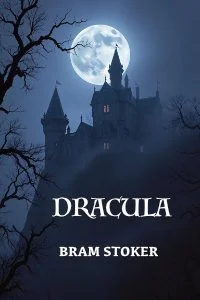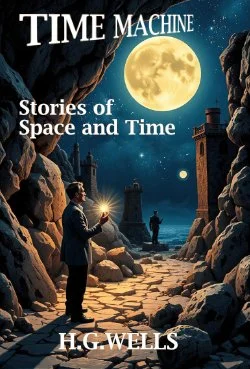By Bram Stoker
Bram Stoker's Dracula, first published in 1897, remains one of the most iconic and influential novels in the Gothic literary tradition. More than a simple horror story, Dracula is a rich tapestry of Victorian anxieties, cultural tensions, and symbolic complexity. Through its epistolary structure and vivid characters, the novel explores themes of modernity versus antiquity, sexuality and repression, imperialism, and the supernatural. It is a work that not only defined the vampire genre but also reflected the fears and fascinations of its time.
The late 19th century was a period of profound transformation in Britain. The Industrial Revolution had ushered in an age of technological innovation and scientific progress, while the British Empire stood at the height of its global influence. Yet beneath this veneer of confidence lay deep-seated anxieties about degeneration, foreign invasion, and the erosion of traditional values. Dracula captures these tensions through its central antagonist, Count Dracula, a foreign aristocrat who threatens the sanctity of British society. His arrival in England symbolizes a reverse colonization, where the East invades the West, challenging notions of cultural superiority and national security.
Stoker’s use of the epistolary format—comprising diaries, letters, newspaper articles, and ship logs—serves to ground the supernatural elements of the story in a framework of realism and documentation. This narrative technique reflects the Victorian obsession with empirical evidence and rationality, even as the characters confront a force that defies scientific explanation. The juxtaposition of modern tools such as typewriters and phonographs with ancient folklore and religious symbols underscores the novel’s central conflict between progress and the past.
One of the most compelling aspects of Dracula is its exploration of sexuality and repression. Victorian society was marked by strict moral codes, particularly regarding gender roles and sexual behavior. The novel subverts these norms through the seductive and transgressive nature of vampirism. Characters like Lucy Westenra and Mina Harker become battlegrounds for these tensions, as their encounters with Dracula blur the lines between victimhood and desire. The act of bloodsucking, laden with erotic undertones, becomes a metaphor for the loss of innocence and the threat of moral corruption.
Religion plays a crucial role in the narrative, often positioned as the ultimate defense against the vampire’s evil. Crucifixes, holy water, and sacred rites are employed alongside scientific reasoning, suggesting a synthesis of faith and logic in the fight against darkness. This duality reflects the Victorian struggle to reconcile religious belief with the rise of secularism and scientific thought.
Dracula also engages with the theme of identity and duality. Count Dracula himself embodies contradictions: he is both man and monster, aristocrat and predator, host and parasite. His ability to transform into animals and control the elements adds to his mystique and reinforces his role as a symbol of the uncanny. The characters who oppose him—Jonathan Harker, Van Helsing, Dr. Seward, and others—represent various facets of Victorian society, from legal and medical professions to religious authority, united in their mission to restore order.
The legacy of Dracula is vast and enduring. It established many of the conventions of vampire fiction and inspired countless adaptations across literature, film, and popular culture. Count Dracula has become a cultural archetype, embodying both fear and fascination. The novel’s rich symbolism and thematic depth continue to invite critical analysis, from psychoanalytic and feminist readings to postcolonial and queer interpretations.
In conclusion, Bram Stoker’s Dracula is far more than a tale of terror. It is a mirror reflecting the complexities of its time, a narrative that intertwines the rational and the irrational, the modern and the ancient, the sacred and the profane. Its enduring power lies in its ability to evoke fear while provoking thought, making it a masterpiece of Gothic literature and a cornerstone of cultural history.
Read-Me.Org Inc. New York-Philadelphia-Australia. 2025. 284p.






